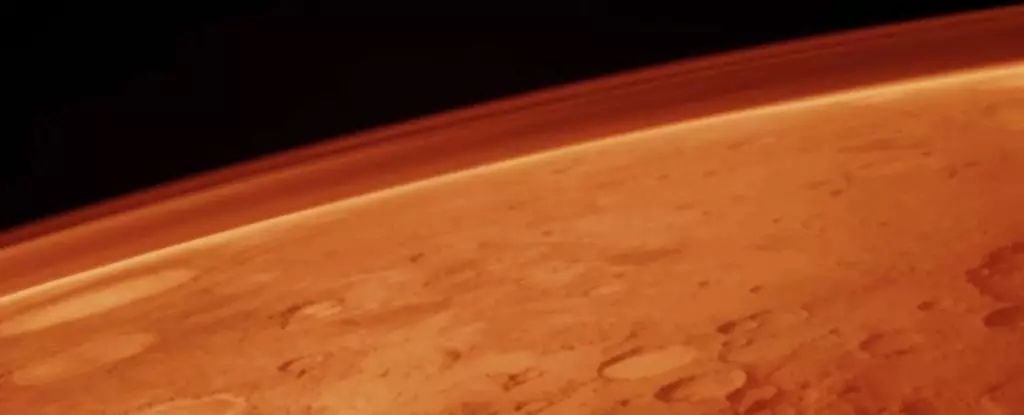Terraforming Mars has long captivated the imagination of scientists, futurists, and the general public alike. The vision of transforming the arid, cold Red Planet into a thriving, Earth-like environment is not just a pipe dream; it embodies humanity’s quest for exploration and colonization beyond our terrestrial bounds. However, as we delve deeper into the intricate feasibility of such an endeavor, the sobering logistics and scientific hurdles paint a starkly different picture. Recent discourse on this topic, particularly through the critical study presented by Dr. Leszek Czechowski at the 56th Lunar and Planetary Science Conference, suggests we might be further away from realizing this dream than we would like to believe.
The Underlying Dilemmas of Pressure and Atmosphere
One of the most significant challenges in transforming Mars lies in its atmospheric pressure. Currently, the atmosphere on Mars is a mere 0.6% that of Earth’s, rendering conditions inhospitable for human life. Dr. Czechowski’s findings highlight an alarming fact: without substantial atmospheric adjustments, water in our bodies would boil away at Martian pressure levels. Just contemplating the need for advanced pressure suits for survival starkly illustrates how inhospitable Mars is currently. While some areas, like Hellas Planitia, present slightly better conditions with marginally increased pressure, they still fall drastically short of what is required for human habitation.
The implications of this research extend beyond mere survival; they force us to confront our understanding of what it means to inhabit another planet. If we cannot easily raise pressure on Mars to even a fraction of Earth’s atmospheric conditions, then how do we begin to engage with the reality of colonization? The hurdles grow concerning when one considers the sheer volume of gases required to facilitate any semblance of an atmosphere capable of supporting life.
Energy Constraints and the Material Challenge
Dr. Czechowski’s paper scrutinizes the colossal amounts of air we would need to transport from celestial bodies to Mars, illuminating an energy cost that is unfathomable with our current technological capabilities. The notion of shipping gas from the Kuiper Belt poses itself as a solution, yet the questions remain: How do we transport these materials efficiently? What propulsion systems do we use? As Czechowski suggests, while harnessing the resources from the Oort Cloud or Kuiper Belt might seem ideal, the logistical inequalities still present monumental obstacles.
Asteroids from the Main Belt showcase a closer alternative, but they lack the necessary nitrogen and water that are vital in creating a breathable atmosphere. While it is tempting to romanticize the idea of using celestial objects to bombard Mars and artificially induce atmospheric change, the reality is that the timelines for these operations extend into millennia. The nuance between science fiction and achievable science becomes acutely apparent when one contemplates waiting 15,000 years for an Oort Cloud object’s impact on Mars.
The Risks of Celestial Manipulation
Bringing Kuiper Belt objects closer to Mars seems more immediate, yet it entails significant risks. The unpredictability of their journey through the inner solar system presents a fascinating paradox. These icy bodies, held loosely together, could break apart during transit, leading to considerable material loss. This unpredictability demands innovative methods of engaging with these celestial bodies, questioning whether a gravity assist is viable or if other means are required.
Dr. Czechowski boldly proposes a fusion reactor-powered ion engine as a potential solution for directing icy bodies; however, the absence of detailed engineering strategies leaves the proposition in a speculative realm. The need for robust and careful planning cannot be overstated, as failures in this domain could not only jeopardize terraforming objectives but also waste invaluable resources, both energetic and material.
The Ongoing Aspiration of Colonizers
Despite the daunting challenges illuminated by recent studies, the allure of terraforming Mars is undeniable. Enthusiasts envision a future where humanity extends its reach into the cosmos, marking a new era of interplanetary living. Nevertheless, the entire endeavor hinges upon our technological advancements in energy production, space travel, and material science.
The discussion surrounding terraforming raises essential questions about our priorities as a civilization and whether we should expend our efforts on transforming another planet rather than resolving pressing issues on our own. The dream of a terraformed Mars endures, yet it serves as a poignant reminder of the balance between aspiration and the need for grounded, scientifically accurate approaches to our cosmic ambitions. While some may perceive this as a mere fantasy, it’s a calling to innovate and redefine what our technological future might encompass—a quest still rife with possibility, albeit cluttered with formidable challenges.


Leave a Reply